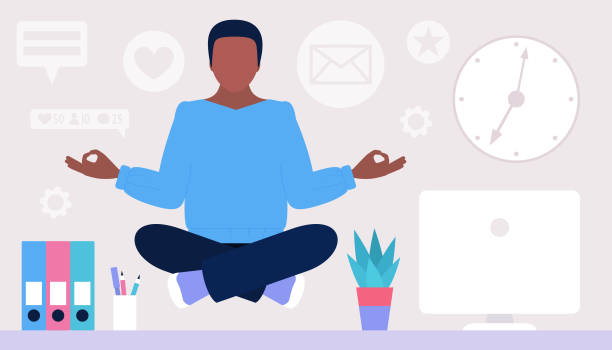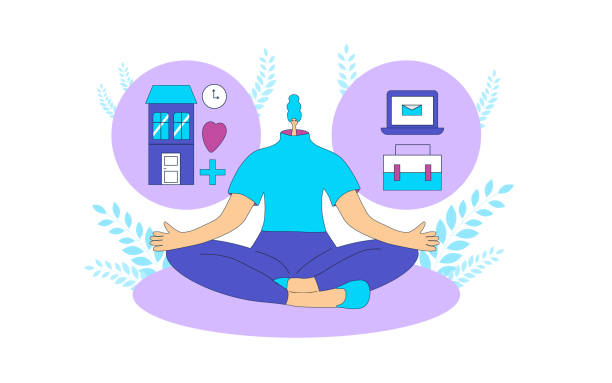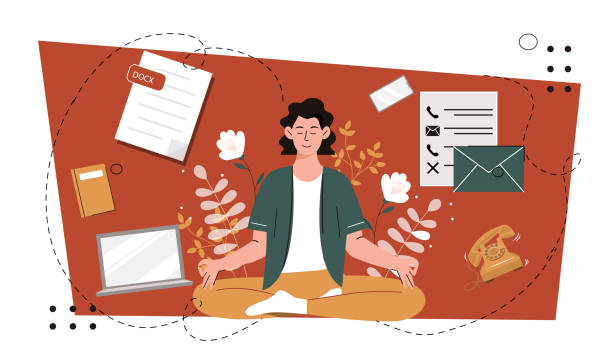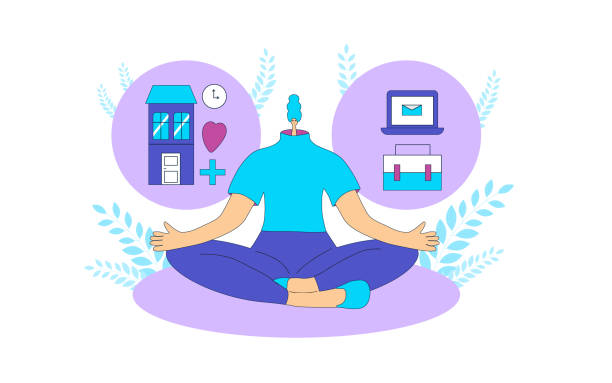Commit to a five-minute break every hour to breathe deeply and reset your focus. Set an alarm on your phone or calendar to remind you, ensuring you step away from your screen. During this time, concentrate on your breath. Feel the air fill your lungs and slowly release it. This simple act refreshes your mind and boosts your productivity.
After your deep breathing, engage in a brief moment of gratitude. Take out a notepad and jot down three things you appreciate. They can be as simple as a warm cup of coffee or a productive meeting. This practice shifts your mindset and cultivates positivity, enhancing your overall mood for the day.
Incorporate movement into your routine by committing to a brief stretching session. Stand up, reach your arms overhead, and stretch your body for a couple of minutes. This short activity revives your energy and reduces any physical tension that can accumulate during long hours of sitting.
Establish a “no screen” minute before lunch. Pause all digital interactions and enjoy your meal mindfully. Savor each bite and appreciate the flavors, focusing solely on your food. This habit not only aids digestion but also promotes a more satisfying eating experience, making your breaks more fulfilling.
Lastly, end your workday with a mindfulness reflection. Take a moment to review what you achieved, write down key takeaways, and set intentions for tomorrow. This practice closes your workday meaningfully and allows you to transition into your personal time with a clear mind.
Incorporating Short Mindfulness Breaks Into Your Work Day

Set a timer for five minutes every hour. Use this time to step away from your screen and reset your focus. During this break, try simple breathing exercises. Inhale deeply for four counts, hold for four, then exhale for six. Repeat this process three times to clear your mind.
Create a dedicated mindfulness corner in your workspace. Include a comfortable chair, calming visuals, or a plant. When you need a break, head to this spot for a quick mental recharge. Spend a few moments simply observing your surroundings, noting details without judgment.
Experiment with body scanning exercises. Close your eyes and mentally scan your body from head to toe. Focus on areas of tension, consciously relax these parts one at a time. Spend three to five minutes on this practice, allowing yourself to let go of stress.
- Try journaling briefly about your current feelings. Write three things you appreciate about your day.
- Listen to a short meditation or calming music. Choose tracks that last around five minutes.
- Engage in gentle stretching. Stand up and stretch your arms and legs, promoting blood flow and reducing stiffness.
Integrate mindfulness into routine tasks. While drinking your coffee, focus on the taste and aroma. Engage fully with the experience, setting aside distractions. This practice enriches your sensory awareness throughout the day.
Use a mindfulness app for guided sessions. Choose one that offers quick, effective techniques for focus and relaxation. These sessions fit easily into your schedule and provide structure to your breaks.
How to Choose the Right Duration for Maximum Impact

To optimize your micro-mindfulness rituals, select durations that align with your attention span and the complexity of your task. For quick resets, aim for 1 to 3 minutes. This brief interval allows you to clear your mind without involving extensive mental effort.
For more impactful reflections or deeper breathing exercises, consider durations of 5 to 10 minutes. This length provides enough time to engage fully with your thoughts and sensations while remaining manageable within a busy schedule.
If you’re focusing on gratitude or intention-setting, extend this to 10 to 15 minutes. Allocate this time to journal or visualize intentions, enhancing emotional clarity and motivation throughout your day.
Track how you feel during different durations. Experiment with various time frames and note which ones yield the most significant benefits in terms of focus and relaxation. Adjust based on your findings to craft a personalized routine that enhances your remote work experience.
Finally, schedule these rituals into your day. Consistency matters; it reinforces the habit and integrates mindfulness into your workflow effectively. Aim to embed at least one session daily, whether during breaks or as a morning routine, to fully experience the benefits.
Creating a Mindfulness-Friendly Workspace
Choose a designated area for work that feels inviting and calm. A clean and organized space enhances focus and reduces distractions. Remove unnecessary clutter, and maintain only what is essential for your tasks. Keep your workspace tidy and regularly declutter.
Incorporate natural elements like plants or flowers. They promote tranquility and improve air quality, creating a more pleasant atmosphere. Even a small succulent can make a difference in how your space feels.
Utilize soft lighting instead of harsh overhead lights. Try using lamps or natural light during the day to create a warm and soothing environment. Dimmer switches or smart bulbs can help adjust brightness according to your tasks or moods.
Add personal touches that inspire you. Artwork, photos, or meaningful objects can promote a sense of belonging and comfort. Ensure they provide positive energy and motivate you throughout the day.
Implement sound control to minimize distractions. Noise-canceling headphones can aid concentration, or consider using background sounds like nature tracks or low-volume music to enhance your focus.
Finally, integrate ergonomic furniture to support your physical well-being. A comfortable chair and desk at the right height can prevent fatigue and discomfort, allowing you to remain present and engaged during work hours.
Technology Tools to Support Mindfulness Practices
Use meditation apps like Headspace or Calm to establish a daily practice. Both platforms offer guided sessions tailored to various durations and themes, such as stress reduction and focus. Set reminders in these apps to prompt your mindfulness breaks throughout the day.
Create a calming workspace with Forest, an app that encourages focus by letting you grow virtual trees as you stay productive. Each time you get distracted, your tree dies, motivating you to minimize interruptions. Pair this with background music from platforms like Noisli, where you can choose ambient sounds that promote concentration and relaxation.
Consider using Insight Timer for its vast library of free meditations and community features. Join groups that align with your interests to find support and inspiration in your mindfulness practice. You can also track your progress over time, encouraging consistency.
Incorporate wearables like Fitbit or Apple Watch to monitor your physical responses during mindfulness practices. These devices can provide data on heart rate and stress levels, helping you identify patterns in your mental state. Use this insight to refine your routines and techniques.
Try utilizing browser extensions such as Mindful Break, which prompts you to take short breaks to stretch or breathe during your work hours. This tool can help reduce tension and enhance productivity by reminding you to reconnect with your body and mind regularly.
Overcoming Challenges in Establishing New Routines
Set specific times for your micro-mindfulness rituals. Allocate 5–10 minutes in your schedule and treat them as non-negotiable appointments. Consistency helps to wire these practices into your daily life.
Start small; introduce just one new practice at a time. This allows you to focus and make adjustments without feeling overwhelmed. For instance, if you choose deep breathing, practice it for a week before adding another ritual.
Utilize reminders. Use your phone or sticky notes as visual prompts to engage in your rituals. Visual cues can help reinforce the habit and serve as a gentle nudge without the pressure of a strict schedule.
Create an environment that supports your routines. Designate a specific spot for mindfulness practices, free from distractions. A calm, inviting space can enhance your focus and make it easier to integrate new habits.
Seek accountability by involving a friend or family member. Share your goals and check in with each other on your progress. This support system creates a sense of community and can keep you motivated.
Maintain flexibility in your routines. Life can be unpredictable, so allow yourself to adjust as needed. If a particular ritual doesn’t fit your day, find an alternative or reschedule it without self-judgment.
Tracking Improvements in Focus and Well-Being
Utilize a daily journaling method to measure your focus and well-being. Dedicate five minutes each evening to note down your accomplishments, challenges, and emotional state throughout the day. This practice encourages reflection and helps identify patterns that affect your productivity.
Set specific metrics for evaluation. For example, track the number of focused work hours versus distractions, or rate your mood on a scale of 1 to 10. This data can highlight what conditions favor peak performance.
Implement a “Focus Score” system. Assign points to different activities based on their impact on your concentration levels. Tally your scores weekly to visualize your progress and recognize areas needing improvement.
Incorporate mindfulness assessments. Use apps or simple self-checklists to evaluate your mindfulness practice weekly. Look for enhancements in clarity, emotional regulation, and overall satisfaction with your remote work experience.
Engage in weekly reviews. Summarize your findings and share them with a trusted colleague or a mentor. Discussing your insights can provide accountability and motivate you to continue enhancing your focus and well-being.
Mindfulness Techniques to Boost Productivity and Reduce Stress

Practice the 5-4-3-2-1 grounding technique to anchor yourself in the present moment. Identify five things you can see, four things you can touch, three things you can hear, two things you can smell, and one thing you can taste. This exercise shifts focus away from stressors and enhances concentration.
Incorporate mindful breathing into your routine. Take a few moments to focus solely on your breath. Inhale deeply for four counts, hold for four counts, and exhale for six counts. Repeat this cycle for a few minutes to calm the mind and recharge your energy.
Set intention throughout your workday. Begin each task by stating a clear intention. For example, before a meeting, you might say, “I will actively listen and contribute.” This clarity aligns your focus and reduces distractions, making your efforts more purposeful.
Adopt a movement break every hour. Stand up, stretch, or take a short walk. Movement encourages blood circulation, which directly impacts mood and energy levels. Use this time to check in with your body and release any tension you might be holding.
- Shift your posture regularly. A straight posture reduces fatigue and improves focus.
- Engage in a quick body scan. Close your eyes and mentally check in with each part of your body from head to toe.
End your day with a reflection exercise. Spend five minutes journaling about what went well and what you can improve. This closure fosters a positive mindset and reduces lingering stress as you transition away from work.
Breathing Exercises to Calm the Mind
To calm your mind, practice the 4-7-8 breathing technique. Inhale deeply through your nose for 4 seconds. Hold your breath for 7 seconds. Exhale slowly through your mouth for 8 seconds. Repeat this cycle four times. You’ll notice a reduction in stress and an increase in focus.
Another simple method is box breathing. Inhale for 4 seconds, hold for 4, exhale for 4, then hold again for 4. This technique helps to ground your thoughts and can be done anywhere, making it perfect during remote work breaks.
| Breathing Technique | Steps | Benefits |
|---|---|---|
| 4-7-8 Breathing | Inhale 4s, Hold 7s, Exhale 8s | Reduces anxiety, improves focus |
| Box Breathing | Inhale 4s, Hold 4s, Exhale 4s, Hold 4s | Grounds thoughts, enhances clarity |
Include a mindful breath count during your daily tasks. Count your inhales and exhales up to five, then start over. This keeps your mind engaged and less likely to wander.
Try diaphragmatic breathing. Place one hand on your chest and the other on your belly. Inhale through your nose, allowing your belly to rise, then exhale through your mouth. This encourages full oxygen exchange and promotes relaxation.
Incorporate these exercises into your routine, dedicating just a few minutes each day. With practice, you’ll find a clearer mind and an improved work experience.
Mindful Listening During Virtual Meetings
Practice active listening by focusing completely on the speaker. Turn off distractions such as notifications and unrelated papers on your desk. This creates a space where you fully engage and absorb the information shared.
- Use a notepad to jot down key points. This helps maintain attention while allowing you to revisit important topics later.
- Minimize multitasking. Resist the temptation to email or browse during discussions. This improves retention and understanding.
- Ask questions to clarify points. Engaging with the speaker not only shows your interest but also enhances comprehension.
- Reflect on what has been said before responding. Take a moment to gather your thoughts, which encourages thoughtful contributions.
Incorporate brief pauses in conversations. Allow moments of silence after someone speaks to process the information and encourage more in-depth dialogue.
Practice empathy by considering the speaker’s perspective. Acknowledging their thoughts and feelings strengthens connections and fosters collaboration.
End each meeting with a feedback session. Encourage sharing of thoughts on what worked well and what could improve future interactions, reinforcing a culture of mindful communication.
Body Scans to Identify Tension Points
Begin your body scan by finding a comfortable position, either seated or lying down. Close your eyes and take a slow, deep breath. Focus your awareness on the top of your head. Notice any sensations or tension present, without judgment.
Gradually shift your focus down to your forehead and jaw. Relax your facial muscles. Observe if there’s tightness or discomfort. Don’t rush; let your breath guide you deeper into relaxation.
Continue scanning down your neck and shoulders. Hold your attention there for a moment. If you sense tension, consciously relax those muscles as you exhale. Consider rolling your shoulders back and forth gently to release built-up stress.
Move your attention down through your arms, hands, and fingers. Feel any sensations as you breathe into each area. If there is any tightness, allow it to soften with each breath.
Shift your focus to your chest and abdomen. Observe how your breath moves in and out of these areas. Notice if there is tension. As you inhale, visualize expansion; as you exhale, let go of any tightness.
Now, concentrate on your back. Pay special attention to your lower back and any areas that feel stiff. Imagine drawing warmth and relaxation into those spots with your breath.
| Body Part | Common Tension Points | Relaxation Tips |
|---|---|---|
| Head | Forehead, Jaw | Gentle jaw movements |
| Neck | Upper Neck, Shoulders | Deep breathing, Neck rolls |
| Arms | Elbows, Wrists | Stretch and shake hands |
| Chest | Upper Chest, Ribs | Deep inhalations |
| Back | Upper, Lower Back | Gentle twists, Lean forward |
Focus on your legs and feet last. Be aware of any tension in your thighs, calves, or feet. Wiggle your toes and feel the ground beneath you, thereby grounding yourself in the moment.
Finish your scan by taking a few more deep breaths. Notice how your body feels after the scan. Slowly open your eyes, reconnecting with your surroundings, and carry this awareness into your daily tasks.



